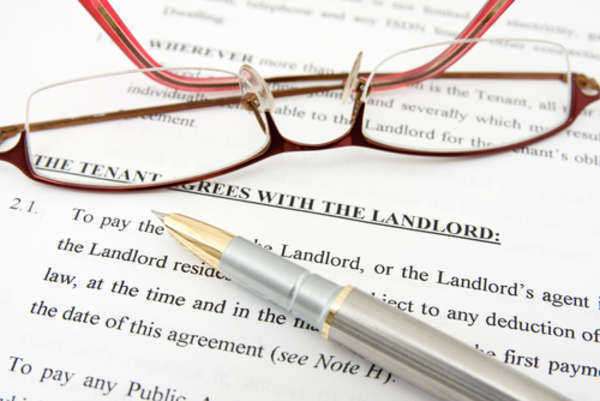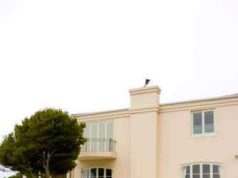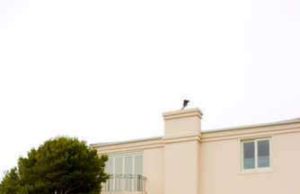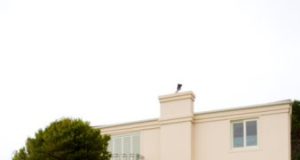
South Dakota Landlord Tenant Law: An Overview
South Dakota Landlord Tenant Law refers to the legal principles governing the rights and obligations of landlords and tenants regarding rental properties. The law outlines how rental agreements are created, what the parties’ responsibilities are, and what remedies are available in case of a dispute. The state’s statutory law and common law define the rights and obligations of landlord and tenant in South Dakota. This article provides an in-depth overview of South Dakota Landlord Tenant Law, giving updated information from government resources, with subheadings for easy reading and comprehension.
Lease Agreement
A lease agreement is a contract between a landlord and a tenant that outlines the terms and conditions of the tenancy. South Dakota has certain requirements for lease agreements that the parties must follow. Lease agreements can be oral or written, but it is advisable to have a written lease agreement to avoid disputes. A written agreement also protects both the landlord and the tenant should any legal action arise.
The lease agreement must contain all the vital details regarding the rental property, including the rental amount, due date for monthly rent, security deposit, maintenance responsibilities, and notice effective dates. A lease agreement should also disclose any restrictions, such as no smoking or pet policies, and utilities covered by the landlord and the tenant. If the lease agreement is in writing, both parties must sign the document. If the lease agreement is oral, the terms are binding on both parties once possession of the property is transferred to the tenant.
Security Deposits
Security deposits serve as a safety net for landlords in case of damages or unpaid rent at the end of the lease term. South Dakota law has specific guidelines on how security deposits are handled. According to South Dakota Codified Law §43-32-6, landlords can charge a maximum of one month’s rent as a security deposit from the tenant. A landlord has 14 business days after the tenant vacates the property to return the security deposit, less any damages. If the landlord decides to retain the security deposit, they must provide the tenant with written documentation of the damages and the cost to remedy them.
Rent Payment and Late Fees
South Dakota Landlord Tenant Law does not prescribe a specific grace period for rent payment, so it is a matter to be addressed in the lease agreement. If the lease agreement allows the landlord to charge a late fee, it must be reasonable and in line with the state’s laws. The tenant has three days after receiving a written notice of non-payment to remedy the situation before the landlord can initiate eviction proceedings.
Tenant’s Right to Privacy
The right to privacy is crucial to tenants and landlords alike. South Dakota Codified Law §43-32-28 provides tenants with the right to enjoy the rental property in peace and privacy. This law prohibits landlords from entering the tenant’s rental unit without prior consent or valid reasons, such as emergency repairs or scheduled maintenance. A landlord must provide the tenant with 24-hours written notice before entering the rental unit, except for specific emergency circumstances, such as water or gas leakages.
Repairs and Maintenance
Under South Dakota law, landlords have a duty to provide safe and habitable living conditions, and tenants must maintain the property in the same condition it was when first rented. The landlord must repair and maintain any electrical, plumbing, heating, and air conditioning systems in the rental unit. The landlord must also keep the rental units free from any hazards or threats to health and safety. Additionally, landlords must ensure all common areas, such as hallways and staircases, are kept clean and in good repair.
The tenant also has responsibilities to maintain the rented property. Tenants must keep the rental unit clean and avoid damaging the property. The tenant can fix any minor issues, such as changing light bulbs or fixing a clogged drain. However, if there are significant repairs needed, the tenant must notify the landlord first.
Termination of Tenancy
A tenancy agreement in South Dakota comes to an end when either the landlord or the tenant gives notice as agreed in the lease agreement or as required by law. For tenancies without a definite end date, such as a month-to-month lease, either party can terminate the lease agreement with written notice no sooner than one full rental period in advance.
Eviction
Eviction is an unfortunate last resort, but sometimes it is necessary to resolve disputes between landlords and tenants. In South Dakota, there are specific procedures and requirements that landlords must follow when evicting tenants. Landlords must follow the legal procedures outlined in South Dakota Codified Law §21-16-1 to §21-16-39 that outlines the eviction process for tenants who do not comply with the lease agreement’s terms.
The landlord must provide a notice to the tenant specifying the reason for the eviction and allow the tenant three days to remedy the situation, unless the reason for the eviction requires more immediate action, such as criminal conduct.
If the tenant does not comply with the landlord’s notice, the landlord can file an Unlawful Detainer Complaint with the local court. A court hearing will be scheduled, and both parties will have an opportunity to present their case. If the judge decides in favor of the landlord, they will be granted possession of the rental property, and the tenant will have a specific number of days to vacate.
Conclusion
South Dakota Landlord Tenant Law is designed to protect the rights of both landlords and tenants in rental transactions. Landlords have a duty to maintain safe and habitable living spaces, and tenants have a responsibility to maintain the rental properties in good condition. The lease agreement forms the foundation of the relationship between tenants and landlords, and it is essential to follow the requirements outlined by the state laws.
If disputes arise, landlords and tenants can work together to find a mutually acceptable agreement. If these methods fail to resolve the dispute, legal action may have to be taken. It’s always best to consult a qualified legal expert to ensure that both the tenant’s and landlord’s rights are protected. A thorough understanding of South Dakota Landlord Tenant Law can prevent conflicts and ensure a smooth, cooperative relationship between tenants and landlords.
Frequently Asked Questions about South Dakota landlord Tenant Law
What is South Dakota landlord tenant law?
The rules concerning the relationship between South Dakota landlords and their tenants are prescribed in South Dakota landlord tenant law . The rights of both parties are explicitly outlined in these codes, so it’d be best if you familiarize yourself with them as much as possible. You can read the original laws here. But if you’d prefer, see below for answers to some of the most popular questions about South Dakota landlord tenant law .
What is a rental agreement?
The rental agreement is the foundation for any landlord-tenant relationship. It should lay out the all of the following terms of the leasing:
• Period of rental;
• Amount of rent due;
• Date that rent will be due;
• Consequences for late payment of rent;
• Security deposit amount;
• Method for reclaiming security deposit;
• Landlord’s duties and responsibilities;
• Pet policy;
• Yard care and house up-keep.;
A rental agreement may be either written or verbal, as South Dakota landlord tenant law respects both. However, since verbal agreements are easy to dispute, it is always better to have your rental agreement in writing. If you cancel your rental agreement, this will need to be done in writing, not verbally.
Can anything be in a rental agreement?
The truth is that South Dakota landlord tenant law actually prohibits many elements from being included in any rental agreement, as they violate an individual’s rights. These include clauses stating:
• That the landlord cannot be responsible for damage or personal injury;
• That the tenant automatically accepts responsibility for all damages to rented property;
• That the landlord can enter the apartment at will without notice;
• That the landlord can evict you without notice;
• That the landlord can take your property for not paying rent;
• That the landlord can keep the security deposit without giving a reason.
What is an application fee?
An application fee is a perfectly acceptable billing concept according to South Dakota landlord tenant law . The payment goes toward the cost of speaking to the tenant’s references. Most fees are fifty dollars or less, but there are no clauses in South Dakota landlord tenant law defining egregious application fees.
What does South Dakota landlord tenant law say about security deposits?
A security deposit is charged to a tenant to compensate the landlord in case the tenant damages their apartment beyond reasonable wear and tear. A tenant does have the right to inspect a premises before paying a security deposit, and then to request a statement concerning the current state of the premises be signed by their landlord.
The typical security deposit is one month’s rent, and South Dakota landlord tenant law forbids larger amounts except in special circumstances, such as when the tenant has a pet.
The landlord may retain the security deposit, but only that portion necessary to repair the tenant’s damage to the premises. Security deposits charged or kept in bad faith are subject to a $200 fine.



























